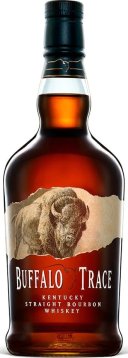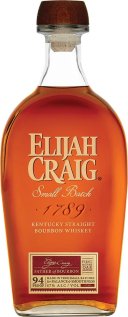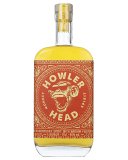Southern Comfort Whiskey Liqueur
In 1874 M.W. Heron, a bartender, developed Southern Comfort in his bar near La Rue Bourbon in New Orleans and first served it in traditional fashion from a whiskey barrel. In 1934 after a short break in production due to Prohibition, Southern Comfort introduced their current distinctive label featuring the now famous Currier and Ives lithograph of a Southern plantation house on the banks of the Mississippi. The plantation is known as "Woodland Plantation", built in 1834. Southern enthusiasts can visit the newly renovated mansion, which now operates as a nine bedroom country inn. Southern's identity as a bourbon lies only in its origins. Its inception was in an awful whisky batch that Heron was attempting to improve. Actually, Southern Comfort was originally a Peach Liqueur, and one of the few peach liqueurs on the market. Produced using neutral spirit and over 100 ingredients, the final liqueur matured for eight months prior to bottling. Since then the formula has changed and Southern is now branded a 'whiskey liqueur'. Sweet and rich with a molasses background and faint medicinal flavour, it's America’s “Take it easy Drink”. Enjoy it straight, on the rocks or with cola.
Buffalo Trace Bourbon Whiskey
For over 200 years, Buffalo Trace Distillery has been defined by a dedication to one craft: making fine American whiskey. By honouring tradition and embracing change, it has earned its place of leadership among the legendary spirits producers of the world and is now recognised as the World’s Most Awarded Distillery. The venture produces a wide range of whiskeys using three different mash bills: one light rye, one heavy rye and a third flavoured with wheat. They've developed different products by aging those three mash bills to meet various grades and price points. At Buffalo Trace, that translates into at least fifteen labels: W. L. Weller, Eagle Rare, George T.Stagg and Old Rip Van Winkle (amongst others), and that's not counting many reserve and limited-release variants. While the mash bills contribute to the flavour, the more significant differentiation among brands takes place in century-old warehouses. Constructed of massive wood beams and covered by a brick shell, these structures allow the alternating cooling and warming of Kentucky's four distinct seasons to mature the bourbon by nature's timetable. Steam pumped throughout the warehouses during the extreme cold of winter compensates for the dramatic drops in temperature and gives the whiskey additional cycles in and out of the wood. This is said to make for a more balanced bourbon as the liquid is able to take additional advantage of the natural sugars occurring in the charred barrels. The distillery was the first to use this method of aging in 1859 and has been doing so ever since. The warehouses were built in the 1900s and represent diverse architectural styles. Consequently, their designs and location on the property contribute to the significant differences in the whiskey coming from each. Certain floors within a given warehouse produce better whiskey than others do. For example, the fourth and fifth floors of Warehouse C and the fourth through sixth floors of Warehouses I and K produce the company's best. It's these locations which have been reserved for the maturation of Buffalo Trace. The brand itself was born only relatively recently. In 1999, visitors to the newly named and renovated distillery asked, “Why isn’t there a bourbon called ‘Buffalo Trace?" In response, Elmer T. Lee ventured into the best floors in the best warehouses to find some of the finest barrels that really matched up with his views on what a full-bodied, robust Kentucky straight bourbon whiskey should taste like. The result was what consumers enjoy today , batched from no more than 40 barrels at a time. There are two ABV variants on offer - one at 45% and this lower proof 40% bottling. The flavour profiles are pretty much identical, but as you would expect, less alcohol means a little less concentration. That said, the difference isn't huge, and what you miss out on is made up for in dollar savings. The style moves away from macho Bourbon, aligning with the feminine elegance of whiskeys like Evan Williams Single Barrel. As an affordable, middle-tier offering, it's also deceptively complex. The rye is evident but balanced by softer, sweeter notes like vanilla wafers, toasted sponge cake, cherry chocolate and just plain old, high-quality American oak. This expression doesn't boast super length, but it is incredibly easy to drink. Our preference is uncut (too much water makes it a little 'peachy' and the more nuanced notes are lost). An ice cube and a comfortable chair by the barbeque is all you need to complete the picture.
George Dickel No.8 Tennessee Whiskey
Presently run by Master Distiller, John Lunn, who continues the hands on process as set forth by George Dickel and again by Ralph Dupps, Dickel whiskey is produced from a mash of corn, barley and rye. The grains are finely ground at the distillery before being cooked. They are then cooled in mash tubs by pure spring water from Cascade Spring, located about one-half mile up the road from the distillery. Fermentation is begun using a proprietory yeast, followed by a double distillation - firstly in a column still, then in a pot-still. The process of charcoal mellowing then occurs, which defines the difference between Tennessee whiskey and bourbon whiskey. In this process, the double-distilled whiskey is filtered through sugar maple charcoal. Dickel's mellowing process is unique in that it is chilled prior to the filtration process. This process of chilling the whiskey resulted from George discovering that the batches of whiskey he tasted during the winter were noticeably smoother than those he tasted during warmer weather. He called this process chill mellowing. The first step in the mellowing process is selecting and cutting sugar maple trees. Trees are cut in the winter months when the sugar maple's rich flavour is stored in the trunk of the tree. The trunks are allowed to season and cut into strips. These strips are hand-stacked and set ablaze in the open air. This process allows the smoke's impurities to escape from the resulting hard charcoal. The hard maple charcoal is crushed by hand and packed into one of six mellowing vats located at the distillery. About ten feet of charcoal is packed into each vat. Two virgin wool blankets are placed on the top and bottom of the charcoal. The top blanket ensures that the newly chilled whiskey uniformly reaches into the vat, while the bottom blanket keeps the charcoal from escaping as the whiskey leaves the vat. The entire chill charcoal mellowing process takes seven to ten days to complete, and though this extra process is time consuming and expensive, the distillery believes the end result speaks for itself. The whisky is finally aged in new, charred American white oak barrels. Full barrels are aged just up the hill from the distillery in the industry's only single-storied iron-clad warehouses. Dickel No.8 received a silver medal in 2005 at the San Francisco World Spirits Competition. More recently it was lauded with the prestigious Gold Medal. Tasting notes: Bright topaz. Aromas of toasted toasted marshmallow, sweet corn and vanilla bean as well as hints of rye freshness. A youthful but nicely rounded whiskey with attractive corn, toasty oak, cocoa and peppermint notes leading into a gently spicy finish. Value buy. 40% Alc./Vol.
Elijah Craig Small Batch Kentucky Straight Bourbon Whiskey
Elijah Craig are another of Heaven Hill's successful brands. When a surge in popularity for the 12 year led to an inability to meet demand, it was removed from US shelves in 2016 (no surprise, age statements are now sought after). The core whiskey has since been re-labelled “Small Batch". Typically made from a mash bill of 75% corn, 13% rye and 12% malted barley, rumour has it this contains a fair proportion of whiskeys in the 8-12 year old range.
Jim Beam White Label Bourbon Whiskey
Originated in the 1780s by Jacob Beam, a Kentucky farmer, who operated a grain mill and ground grist for locals - a portion of which was always reserved for the families private use - to make whisky. It was in 1795 the Jacob finally began commercial production, however it was not under the Beam Label. Consistency of style has been maintained by using the same yeast cultures for over 60 years, derived from an original culture made by Jim Beam himself on his back porch. Beam Bourbon is the product of six generations of distillers with only one enforced break in production between 1920 and 1933 when prohibition was introduced to the U.S. It was following prohibition, (during which time the distillery had been shut and sold to the U.S. government) that the bourbon was named "Jim Beam" after the head of the Beam family. To drink Beam then is to taste something of its American heritage. White Label is aged for four years and appreciated for it's pleasant sweet/sour and mellow, nutty character, making it one of the biggest selling Bourbons globally. 37% alc./vol.
Eagle Rare 10 Year Old Bourbon Whiskey
"One soaring, beautiful eagle." - Jim Murray's Whisky Bible We first tasted Eagle Rare in 2006 when it was labelled 'Single Barrel'. As of 2019, that changed to a multi-barrel blend with a ten year old age statement. It remains a standout value - an American whiskey with the unusual credentials of maintaining a reputation for exceptional quality while being relatively easy to come by. The profile confirms a #1 Mashbill from Buffalo Trace, which is reported to be low rye (10% or less), yielding notes of caramel, new charred oak, liquorice bullets, cocoa and peppermint rock lollies plus cinnamon in support. The complexity grows with time. Re-tasted from a 20ml sample, it's lean on entry, but fills out beautifully into a medium-bodied, chewy whiskey with muted rye spices before vanilla and Bounty Bar flood the finish, the sugars checked by balancing oak and more creamy vanillas. Ever reliable and better than many Bourbons at twice its price, Eagle Rare remains hard to beat. 45% Alc./Vol.
Howler Head Banana Bourbon
It’s made with the good stuff – real Kentucky Straight Bourbon Whiskey aged for two years in American oak barrels toasted with an aggressive #4 alligator char. It is then blended with natural banana flavour for a smooth, kick of bananarama goodness. At a full 80 proof, one taste and you will know they aren’t monkeying around.Tasting Notes: The nose offers layers of cream and vanilla over slivers of sweet banana and wood. On the palate are bites of caramel, banana candy, and baked spice.
Buffalo Trace Bourbon
Buffalo Trace has been making legendary bourbon whiskey for over 220 years through prohibition and two world wars. The Buffalo Trace distillery has been awarded 'Distillery of the Year' 7 times and Buffalo Trace has been award over 22 national and international awards. The whiskey shows wonderful aromas of vanilla, mint and molasses which follows through on the palate with notes of brown sugar and spice. A long and dry finish rounds off what is a truly great whiskey.
Nelson County Kentucky Bourbon
Aged in new charred barrels made from American White Oak, which gives Nelson County the smooth, distinctive flavour of a true Bourbon Whiskey.
Old Virginia 12 Year Old Kentucky Straight Bourbon Whiskey
Old Virginia's 12 Year Old showcases the rare quality of authentic Bourbon from Kentucky. Presented in

















